How do we come to terms with something as abstract as death? Our own heavy, very real flesh will one day be in another indistinct form. The sacred bodies of our loved ones are subject to the same fate. What we touch one day can simply be gone the next.
How do we wrap our heads around something that isn’t there? Lucky for us, the human mind is hard-wired to grapple with (and contemplate) such complexity. Our synapses play with and walk around the abstract in the attempt to fill the gap that exists between reality and the intangible.
So does architecture.
One component of the architecture profession is entirely abstract; design competitions exist to spur thought and creativity, and one design competition held by Designboom –and supported by the National Funeral Directors Association — took on re-conceptualizing how death is seen and experienced in the public sphere.
The results of this competition are thought provoking and poetic. A personal favorite of mine is “Sky Light”, by Juan Isaza. In this project, cremains are placed in lit-up, pendant-like urns that hang from various pavilions in a built environment meant to be soothing and nature-like. The notion that a light still glows after death is a beautiful one, like stars that appear to shine even after they are extinguished.
The winning entry of the competition aims to change how we interact with remains and with space. In “Post Community,” a floating cloud of urns are assembled in an atrium-like space. Mirrors flank the atrium, reflecting the sky and clouds above and removing any sense of ground(ing). A visitor calls out a name, and the called-on urn moves through the science-fiction-ish urn cloud and approaches the visitor. People can add memorabilia to the urn, touch it, and interact with it. When they are done, the urn gently returns to the cloud.
Not only can a name call an urn, but an organization, a family or a company can be called, and all urns in that network would appear.
It is fantastic, to say the least. But we live in an age of networks and enmeshed technology in a way that 50 years ago people could likely barely conceive or imagine. Technology will change how we interact with and experience death, and our overly-networked lives will play out in the rituals and traditions we constantly imagine and establish.
Another project from the competition was inspired by ancient icons, and asserts them in a new light. The megaliths in “My Favorite Place” are large and have a strong visual presence. The architect tried to remove mourning from a specified place, instead putting the emphasis on a large, public object that becomes charged with meaning, no matter where it is placed.
The large crystalline structures have both an indistinct and iconic feel to them; the development of meaning will become imbedded in them as time and place have their way on form. Similar to the other entries, a networked light indicates where the remains of the dead are located in the structure.
While these projects re-imagine our relationship to death in a certain, very public way, they are all large, relatively elaborate methods for approaching death in the public sphere and imagination.
What they fail to take into account is the deeply personal way that death affects us. Networks and lights can only go so far. Contemporary takes on death and mourning that bring death down to the intensely physical and personal, even when they are re-imagined traditional practices such as death shrouds, have a distinctly intimate, textured approach that has depth in simplicity — making the abstract that much more real.
However, these architectural forays into the abstract public imagination offer points of departure and discussion for how we, as a public system, see and navigate the process of death, in spite of and maybe because of all their phantasmagoria.

 Between the Abstract and the Real
Between the Abstract and the Real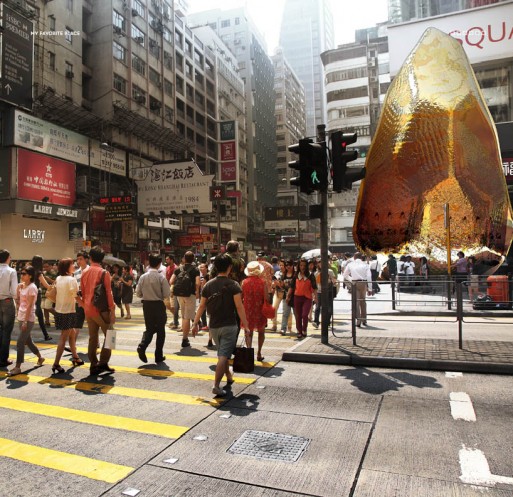
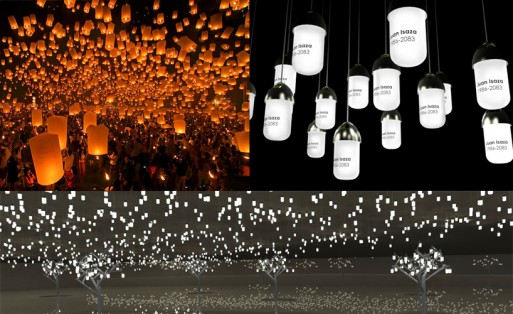
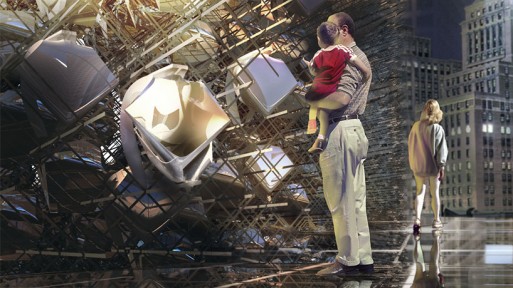
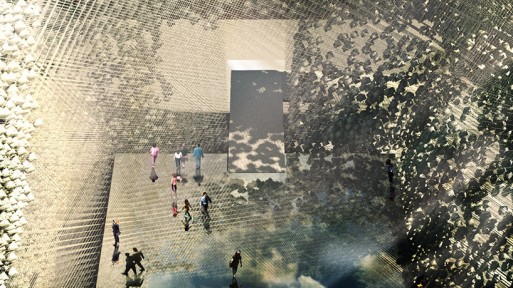
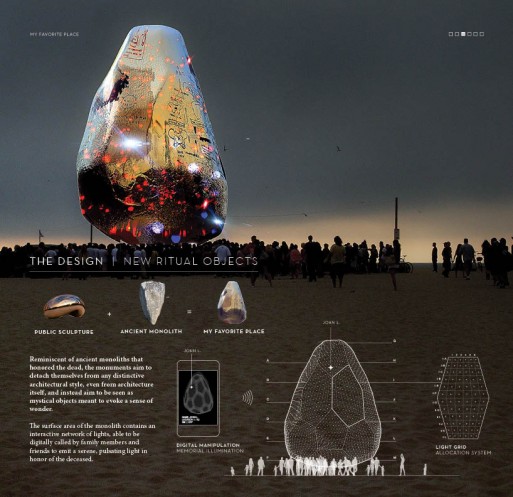



 “As Tears Go By” by Marianne Faithfull
“As Tears Go By” by Marianne Faithfull

 Funeral Favors Offer Visitors a Tangible Memento
Funeral Favors Offer Visitors a Tangible Memento















